 Published in 2018 by The Rosen Publishing Group, Inc. 29 East 21st Street, New York, NY 10010 CATALOGING-IN-PUBLICATION DATA Names: Claybourne, Anna. Title: What do you know about habitats? / Anna Claybourne. Description: New York : PowerKids Press, 2018. | Series: Test your science skills | Includes index. Identifiers: ISBN 9781538323045 (pbk.) | ISBN 9781538322116 (library bound) | ISBN 9781538323052 (6 pack) Subjects: LCSH: Habitat (Ecology)--Juvenile literature. Classification: LCC QH541.14 C627 2018 | DDC 577--dc23 Copyright 2018 Franklin Watts, a division of Hachette Childrens Group Series Editor: Amy Pimperton Series Designer: Emma DeBanks Picture Researcher: Diana Morris Picture credits: aabeele/Shutterstock: .
Published in 2018 by The Rosen Publishing Group, Inc. 29 East 21st Street, New York, NY 10010 CATALOGING-IN-PUBLICATION DATA Names: Claybourne, Anna. Title: What do you know about habitats? / Anna Claybourne. Description: New York : PowerKids Press, 2018. | Series: Test your science skills | Includes index. Identifiers: ISBN 9781538323045 (pbk.) | ISBN 9781538322116 (library bound) | ISBN 9781538323052 (6 pack) Subjects: LCSH: Habitat (Ecology)--Juvenile literature. Classification: LCC QH541.14 C627 2018 | DDC 577--dc23 Copyright 2018 Franklin Watts, a division of Hachette Childrens Group Series Editor: Amy Pimperton Series Designer: Emma DeBanks Picture Researcher: Diana Morris Picture credits: aabeele/Shutterstock: .
Every attempt has been made to clear copyright. Should there be any inadvertent omission please apply to the publisher for rectification. All rights reserved. No part of this book may be reproduced in any form without permission in writing from the publisher, except by a reviewer. Manufactured in the United States of America CPSIA Compliance Information: Batch BW18PK: For Further Information contact Rosen Publishing, New York, New York at 1-800-237-9932. 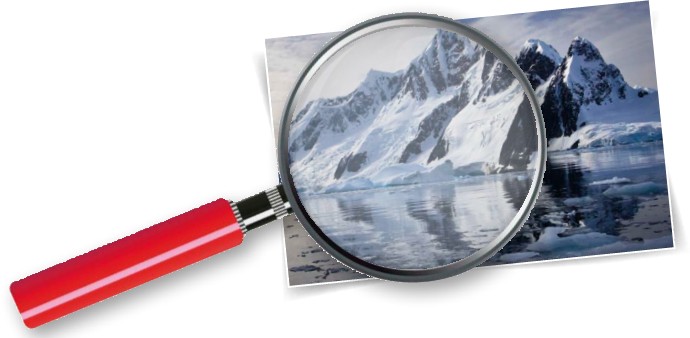 A note about measurements
A note about measurements
Measurements are given in U.S. form with metric in parentheses. form with metric in parentheses.
The metric conversion is rounded to make it easier to measure. WHAT IS A HABITAT? A habitat is the natural home of an animal, plant, or other living thing. Each type, or species, of living thing has its own habitat. For example, the sand cat is a desert animal. Its natural habitat is sandy or rocky deserts in North Africa and parts of Asia. Living things are adapted to their habitats.
The sand cat has fur on the soles of its feet to help it walk over hot sand. Its fur also keeps it warm at night, when deserts can be cold. Its big ears and sharp eyesight help it find small prey in the dark. 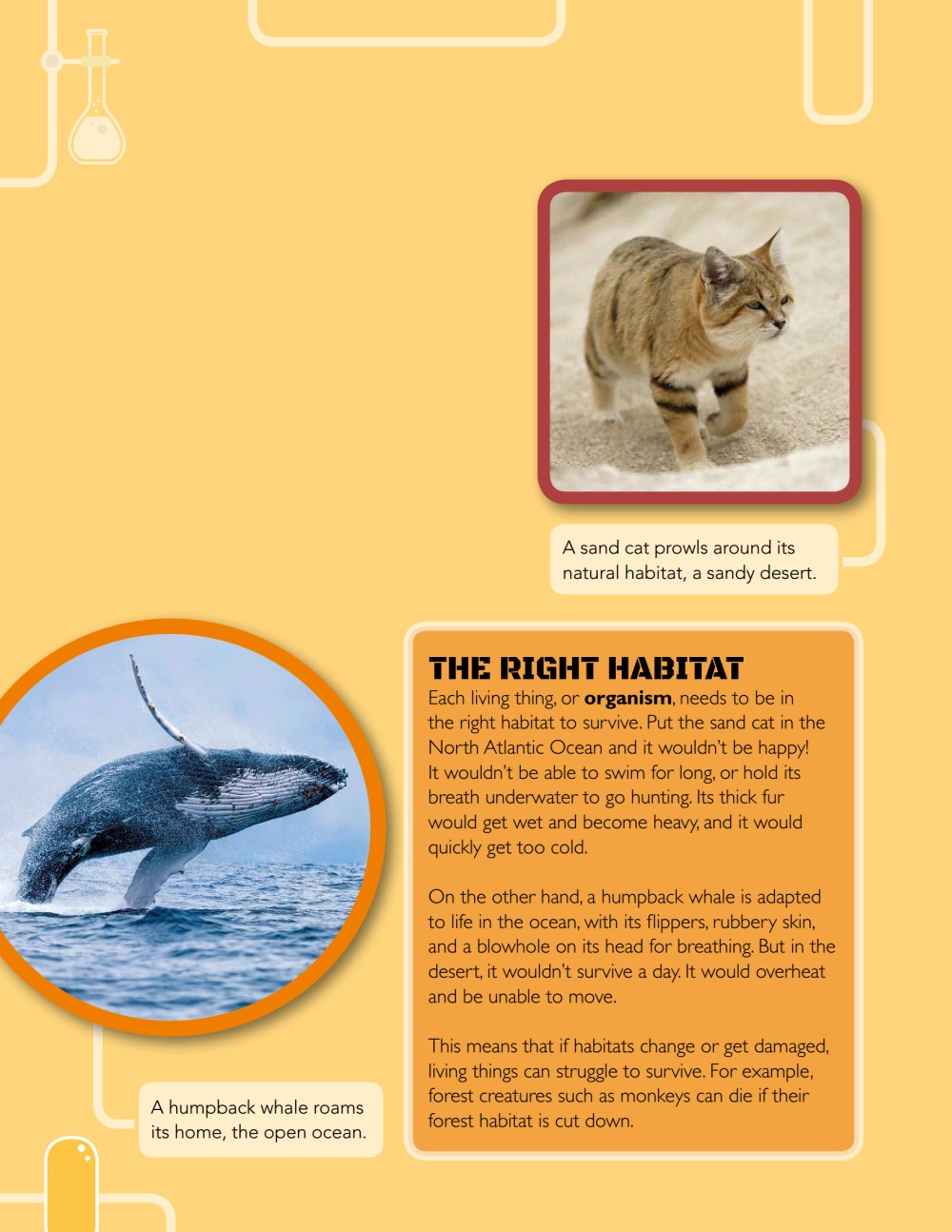
 THE SCIENCE OF HABITATS The word science means knowledge. Throughout history, humans have experimented with all kinds of things in order to learn more about the world. Thats partly because we have a natural urge to find things out.
THE SCIENCE OF HABITATS The word science means knowledge. Throughout history, humans have experimented with all kinds of things in order to learn more about the world. Thats partly because we have a natural urge to find things out.
Studying and understanding habitats is especially important. Many living things are endangered, or at risk of dying out and becoming extinct. Thats partly because of changes humans have made to the world, such as clearing wild forests for cities or farmland. Climate change affects habitats. It can make them warmer, colder, wetter, or drier than they should be. This can cause problems for the organisms that live there.
The more scientists know about how processes such as climate change work, the more we can help endangered animals to survive, and protect and preserve natural surroundings.  WORKING SCIENTIFICALLY In this book, youll find a range of investigations or experiments that will help you discover how habitats and ecosystems work. To do experiments, scientists use careful, logical methods to make sure they get reliable results. The experiments and investigations in this book use four key scientific methods, along with an easy acronym to help you remember them: ATOM .
WORKING SCIENTIFICALLY In this book, youll find a range of investigations or experiments that will help you discover how habitats and ecosystems work. To do experiments, scientists use careful, logical methods to make sure they get reliable results. The experiments and investigations in this book use four key scientific methods, along with an easy acronym to help you remember them: ATOM .  WILDLIFE HABITATS Wherever you live, even if its a town or city, there will be habitats where living things are found.
WILDLIFE HABITATS Wherever you live, even if its a town or city, there will be habitats where living things are found.  SCIENCE EXPERIMENT: HABITAT TRAIL Choose a local habitat that you can visit easily, such as a garden or park, and go wildlife spotting.
SCIENCE EXPERIMENT: HABITAT TRAIL Choose a local habitat that you can visit easily, such as a garden or park, and go wildlife spotting. ADAPTATIONS Living things are adapted to their habitats, meaning they are well-suited to them.
ADAPTATIONS Living things are adapted to their habitats, meaning they are well-suited to them.  SCIENCE EXPERIMENT: HABITAT TRAIL Choose a local habitat that you can visit easily, such as a garden or park, and go wildlife spotting.
SCIENCE EXPERIMENT: HABITAT TRAIL Choose a local habitat that you can visit easily, such as a garden or park, and go wildlife spotting. ADAPTATIONS Living things are adapted to their habitats, meaning they are well-suited to them.
ADAPTATIONS Living things are adapted to their habitats, meaning they are well-suited to them.
Each living thing has body parts and ways of behaving, moving, and feeding that help it live in its habitat. 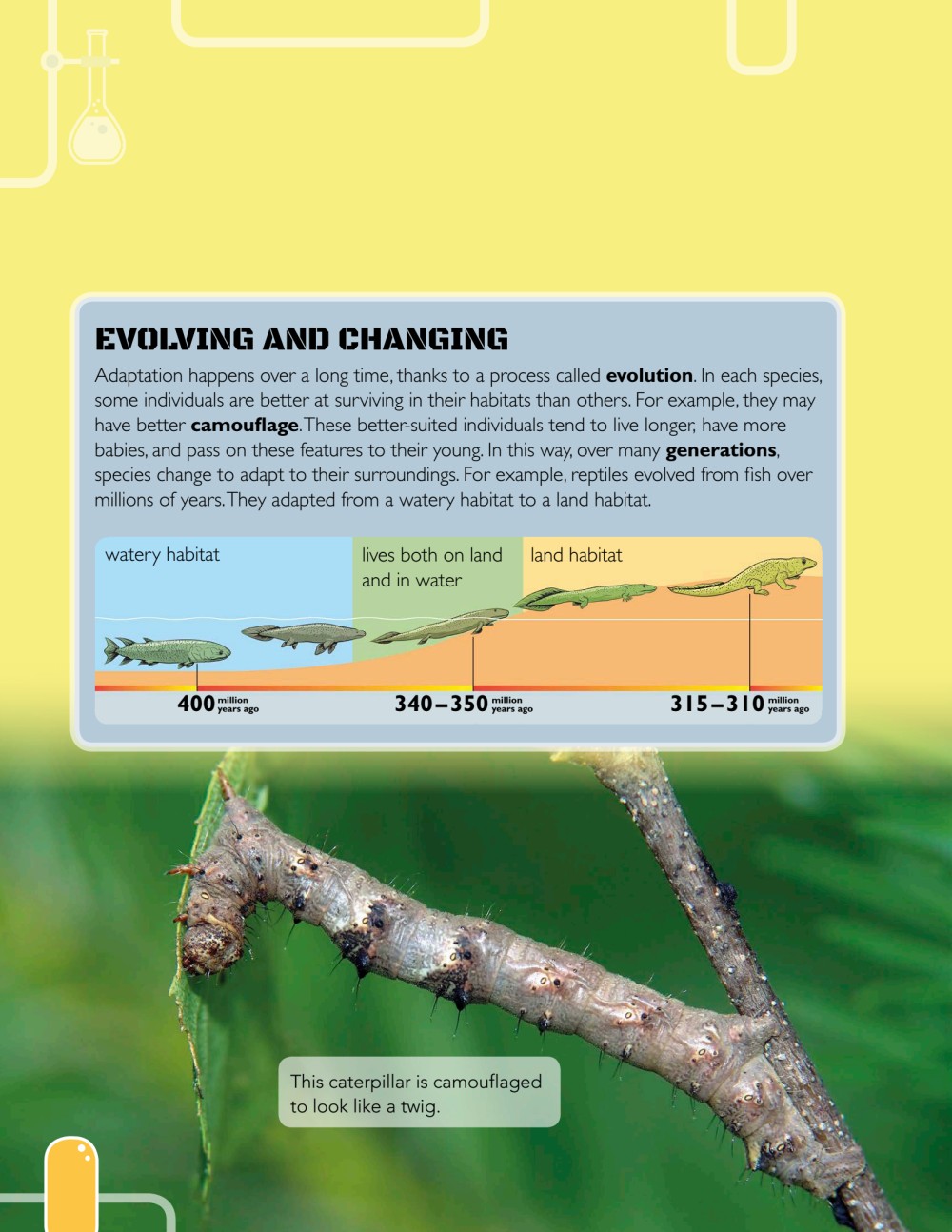 SCIENCE EXPERIMENT: POND DIPPING If theres a pond or big puddle you can visit, you can observe the living things that live there, such as a water boatman (right), to see how they are adapted to their habitat.
SCIENCE EXPERIMENT: POND DIPPING If theres a pond or big puddle you can visit, you can observe the living things that live there, such as a water boatman (right), to see how they are adapted to their habitat.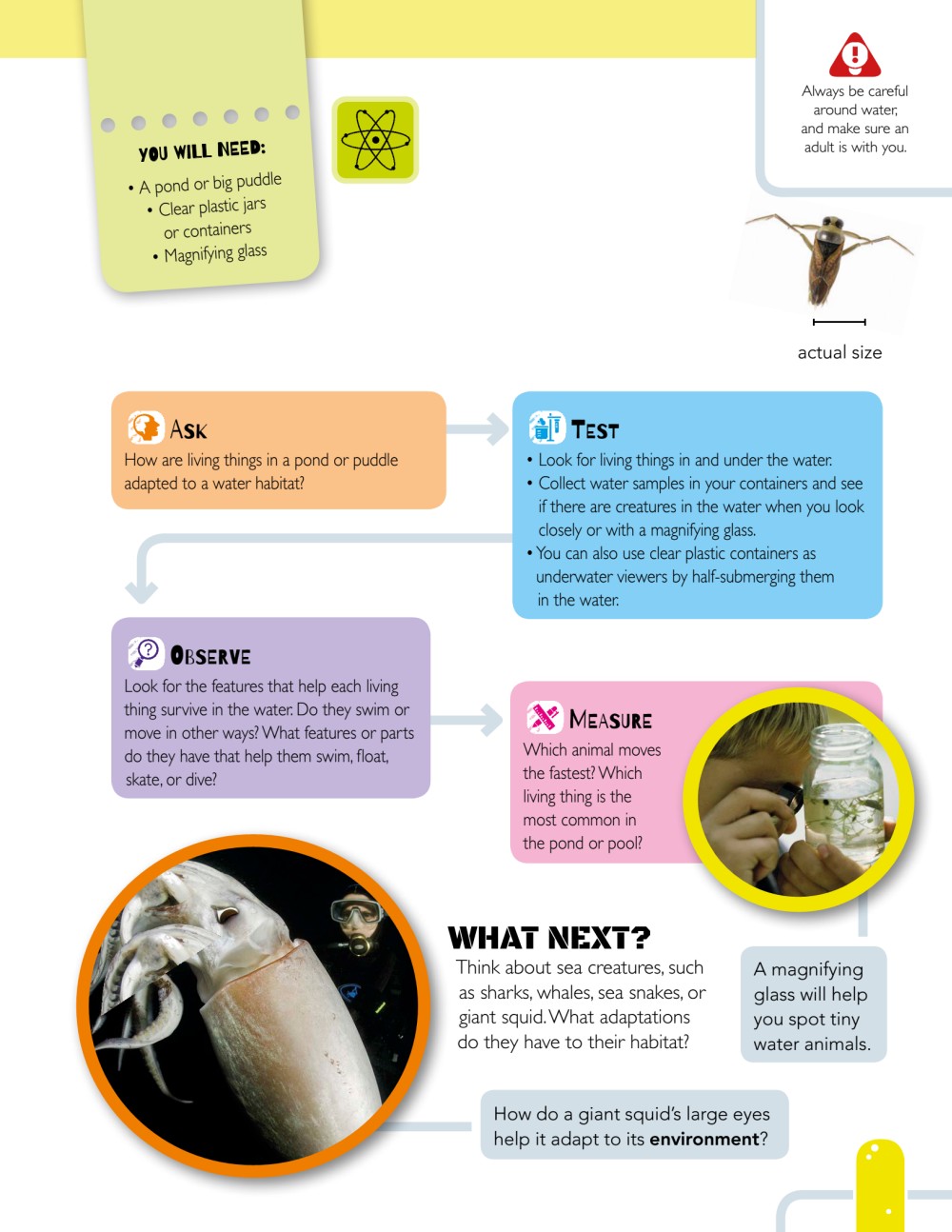 MOVING IN When a habitat exists with the food and surroundings that a species needs, that species will move in and take advantage of it. This is especially true of molds! GOING MOLDY Molds are a type of fungus, and are related to mushrooms and toadstools. Fungi are not plants or animals, but a separate family of living things. They feed on soil, plants, or animals through a network of tiny thread-like roots called a mycelium. A fungus grows stalks or other shapes called fruiting bodies, which release spores.
MOVING IN When a habitat exists with the food and surroundings that a species needs, that species will move in and take advantage of it. This is especially true of molds! GOING MOLDY Molds are a type of fungus, and are related to mushrooms and toadstools. Fungi are not plants or animals, but a separate family of living things. They feed on soil, plants, or animals through a network of tiny thread-like roots called a mycelium. A fungus grows stalks or other shapes called fruiting bodies, which release spores.
Spores are like tiny seeds. They drift around in the air and settle on surfaces. If they land somewhere with a good food supply, they start to grow. 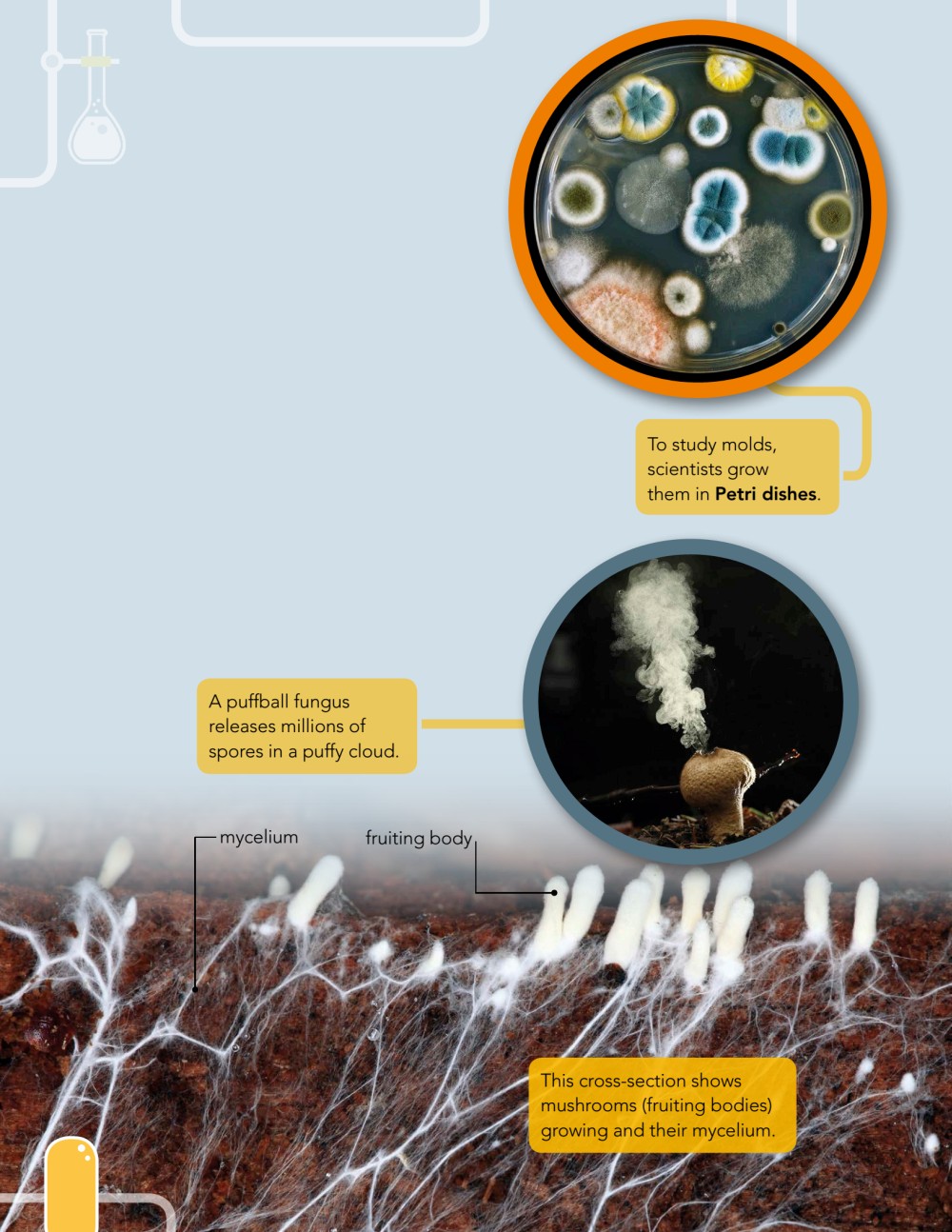 SCIENCE EXPERIMENT: MOLD GARDEN Create a habitat for molds, and watch to see what grows.
SCIENCE EXPERIMENT: MOLD GARDEN Create a habitat for molds, and watch to see what grows.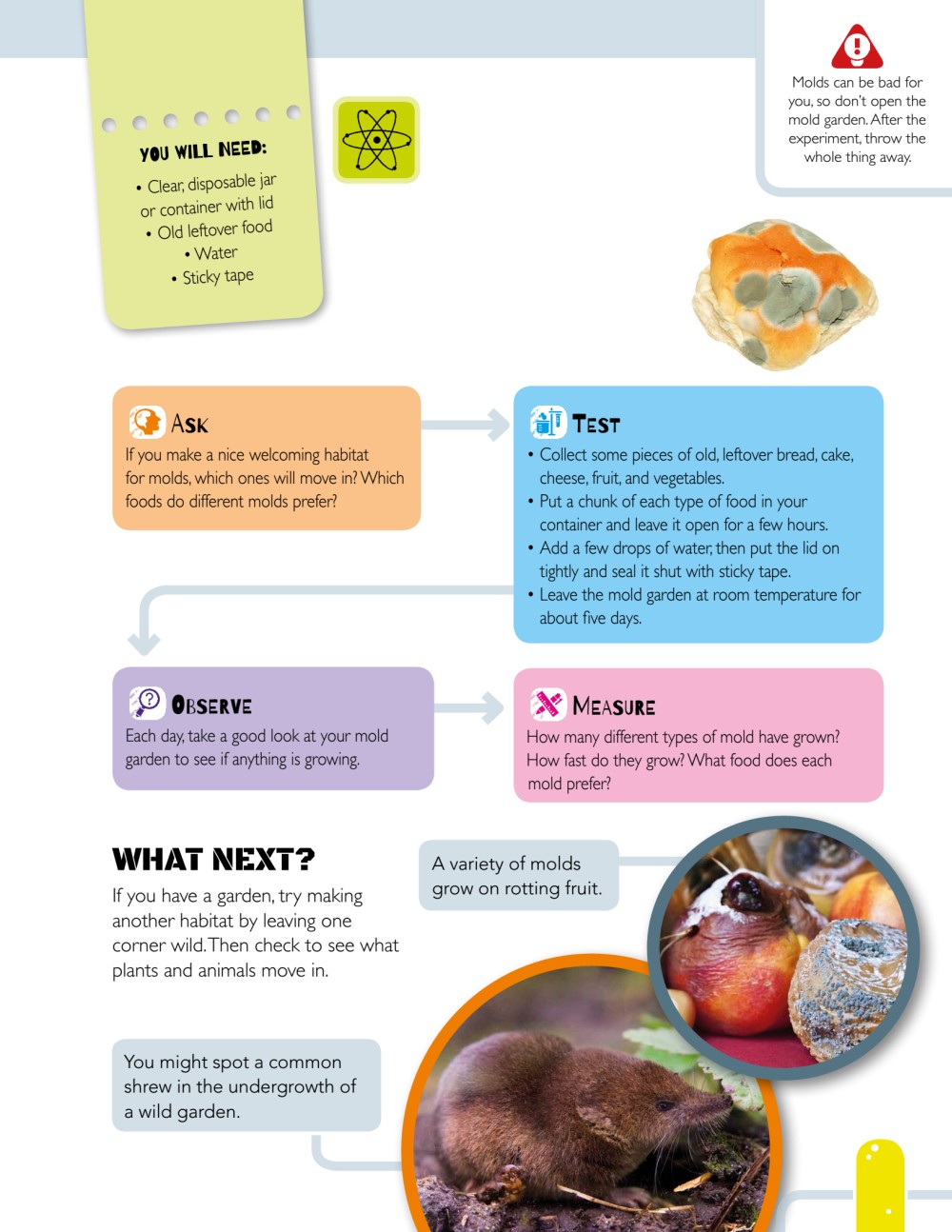 BLENDING IN Camouflage helps living things by making them harder to see within their habitat. Their markings or shapes blend in with the background, making them seem almost invisible. HUNTING AND ESCAPING Camouflage is useful for both predators (hunters) and prey (animals that get eaten).
BLENDING IN Camouflage helps living things by making them harder to see within their habitat. Their markings or shapes blend in with the background, making them seem almost invisible. HUNTING AND ESCAPING Camouflage is useful for both predators (hunters) and prey (animals that get eaten).
Predators can hide while sneaking up on their prey. Prey can hide to avoid being caught and eaten. For camoflauge to work, though, the living things have to match the habitat they live in very closely. A flounder (a type of fish) has camouflage that helps it hide on the seabed to avoid being eaten. 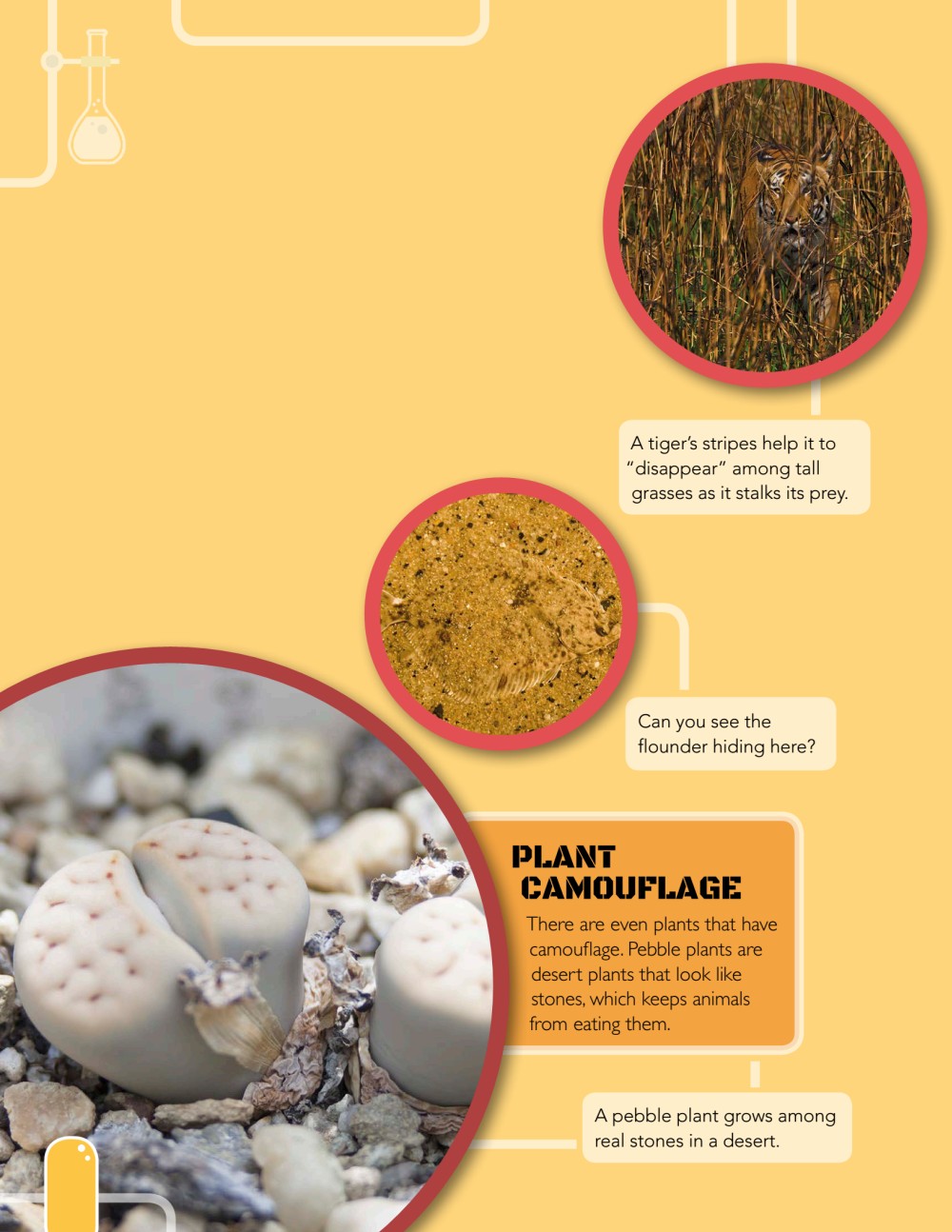
Next page
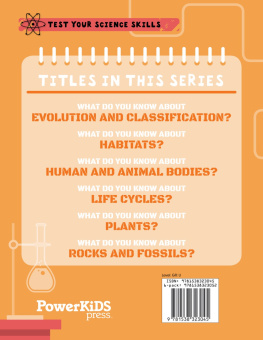


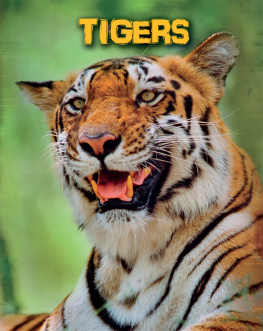
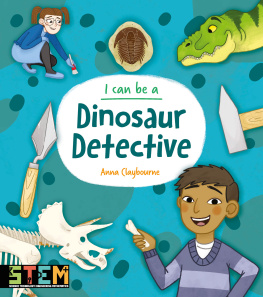
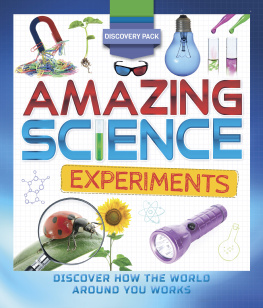

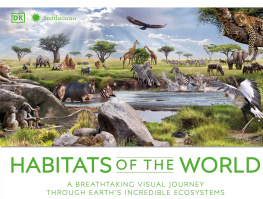
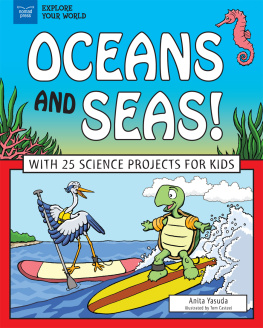

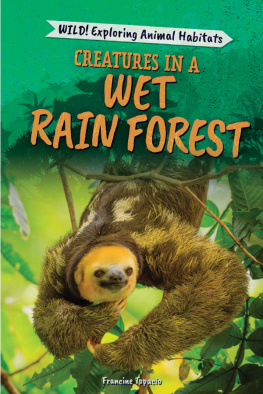
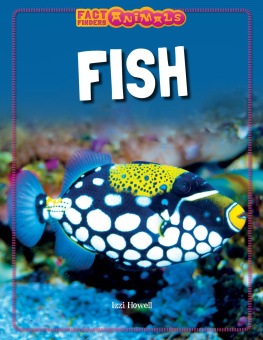


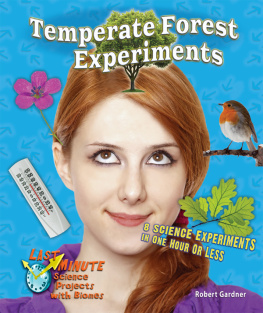

 Published in 2018 by The Rosen Publishing Group, Inc. 29 East 21st Street, New York, NY 10010 CATALOGING-IN-PUBLICATION DATA Names: Claybourne, Anna. Title: What do you know about habitats? / Anna Claybourne. Description: New York : PowerKids Press, 2018. | Series: Test your science skills | Includes index. Identifiers: ISBN 9781538323045 (pbk.) | ISBN 9781538322116 (library bound) | ISBN 9781538323052 (6 pack) Subjects: LCSH: Habitat (Ecology)--Juvenile literature. Classification: LCC QH541.14 C627 2018 | DDC 577--dc23 Copyright 2018 Franklin Watts, a division of Hachette Childrens Group Series Editor: Amy Pimperton Series Designer: Emma DeBanks Picture Researcher: Diana Morris Picture credits: aabeele/Shutterstock: .
Published in 2018 by The Rosen Publishing Group, Inc. 29 East 21st Street, New York, NY 10010 CATALOGING-IN-PUBLICATION DATA Names: Claybourne, Anna. Title: What do you know about habitats? / Anna Claybourne. Description: New York : PowerKids Press, 2018. | Series: Test your science skills | Includes index. Identifiers: ISBN 9781538323045 (pbk.) | ISBN 9781538322116 (library bound) | ISBN 9781538323052 (6 pack) Subjects: LCSH: Habitat (Ecology)--Juvenile literature. Classification: LCC QH541.14 C627 2018 | DDC 577--dc23 Copyright 2018 Franklin Watts, a division of Hachette Childrens Group Series Editor: Amy Pimperton Series Designer: Emma DeBanks Picture Researcher: Diana Morris Picture credits: aabeele/Shutterstock: . A note about measurements
A note about measurements
 THE SCIENCE OF HABITATS The word science means knowledge. Throughout history, humans have experimented with all kinds of things in order to learn more about the world. Thats partly because we have a natural urge to find things out.
THE SCIENCE OF HABITATS The word science means knowledge. Throughout history, humans have experimented with all kinds of things in order to learn more about the world. Thats partly because we have a natural urge to find things out. WORKING SCIENTIFICALLY In this book, youll find a range of investigations or experiments that will help you discover how habitats and ecosystems work. To do experiments, scientists use careful, logical methods to make sure they get reliable results. The experiments and investigations in this book use four key scientific methods, along with an easy acronym to help you remember them: ATOM .
WORKING SCIENTIFICALLY In this book, youll find a range of investigations or experiments that will help you discover how habitats and ecosystems work. To do experiments, scientists use careful, logical methods to make sure they get reliable results. The experiments and investigations in this book use four key scientific methods, along with an easy acronym to help you remember them: ATOM .  WILDLIFE HABITATS Wherever you live, even if its a town or city, there will be habitats where living things are found.
WILDLIFE HABITATS Wherever you live, even if its a town or city, there will be habitats where living things are found.  SCIENCE EXPERIMENT: HABITAT TRAIL Choose a local habitat that you can visit easily, such as a garden or park, and go wildlife spotting.
SCIENCE EXPERIMENT: HABITAT TRAIL Choose a local habitat that you can visit easily, such as a garden or park, and go wildlife spotting. ADAPTATIONS Living things are adapted to their habitats, meaning they are well-suited to them.
ADAPTATIONS Living things are adapted to their habitats, meaning they are well-suited to them.  SCIENCE EXPERIMENT: POND DIPPING If theres a pond or big puddle you can visit, you can observe the living things that live there, such as a water boatman (right), to see how they are adapted to their habitat.
SCIENCE EXPERIMENT: POND DIPPING If theres a pond or big puddle you can visit, you can observe the living things that live there, such as a water boatman (right), to see how they are adapted to their habitat. MOVING IN When a habitat exists with the food and surroundings that a species needs, that species will move in and take advantage of it. This is especially true of molds! GOING MOLDY Molds are a type of fungus, and are related to mushrooms and toadstools. Fungi are not plants or animals, but a separate family of living things. They feed on soil, plants, or animals through a network of tiny thread-like roots called a mycelium. A fungus grows stalks or other shapes called fruiting bodies, which release spores.
MOVING IN When a habitat exists with the food and surroundings that a species needs, that species will move in and take advantage of it. This is especially true of molds! GOING MOLDY Molds are a type of fungus, and are related to mushrooms and toadstools. Fungi are not plants or animals, but a separate family of living things. They feed on soil, plants, or animals through a network of tiny thread-like roots called a mycelium. A fungus grows stalks or other shapes called fruiting bodies, which release spores. SCIENCE EXPERIMENT: MOLD GARDEN Create a habitat for molds, and watch to see what grows.
SCIENCE EXPERIMENT: MOLD GARDEN Create a habitat for molds, and watch to see what grows. BLENDING IN Camouflage helps living things by making them harder to see within their habitat. Their markings or shapes blend in with the background, making them seem almost invisible. HUNTING AND ESCAPING Camouflage is useful for both predators (hunters) and prey (animals that get eaten).
BLENDING IN Camouflage helps living things by making them harder to see within their habitat. Their markings or shapes blend in with the background, making them seem almost invisible. HUNTING AND ESCAPING Camouflage is useful for both predators (hunters) and prey (animals that get eaten).